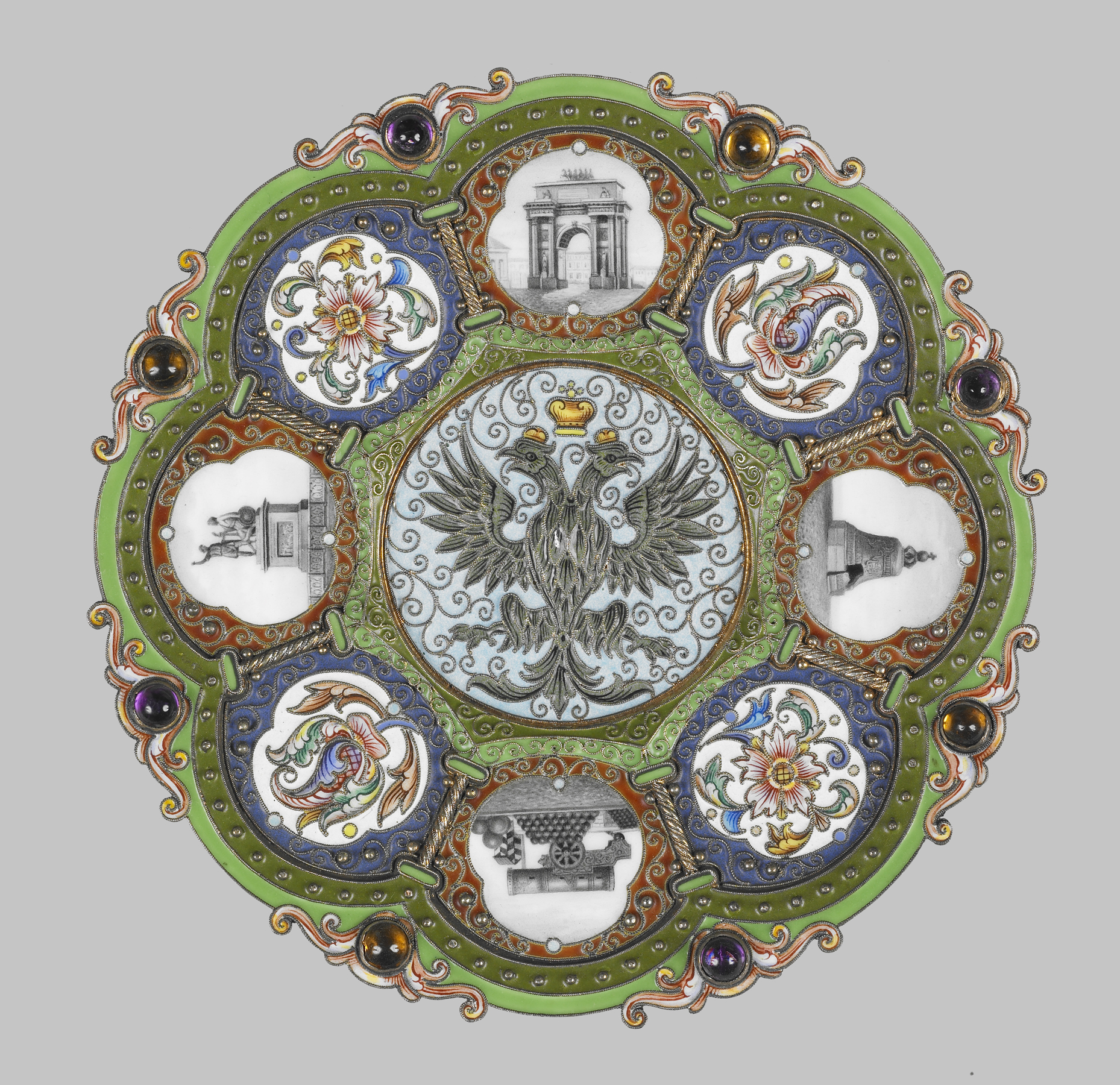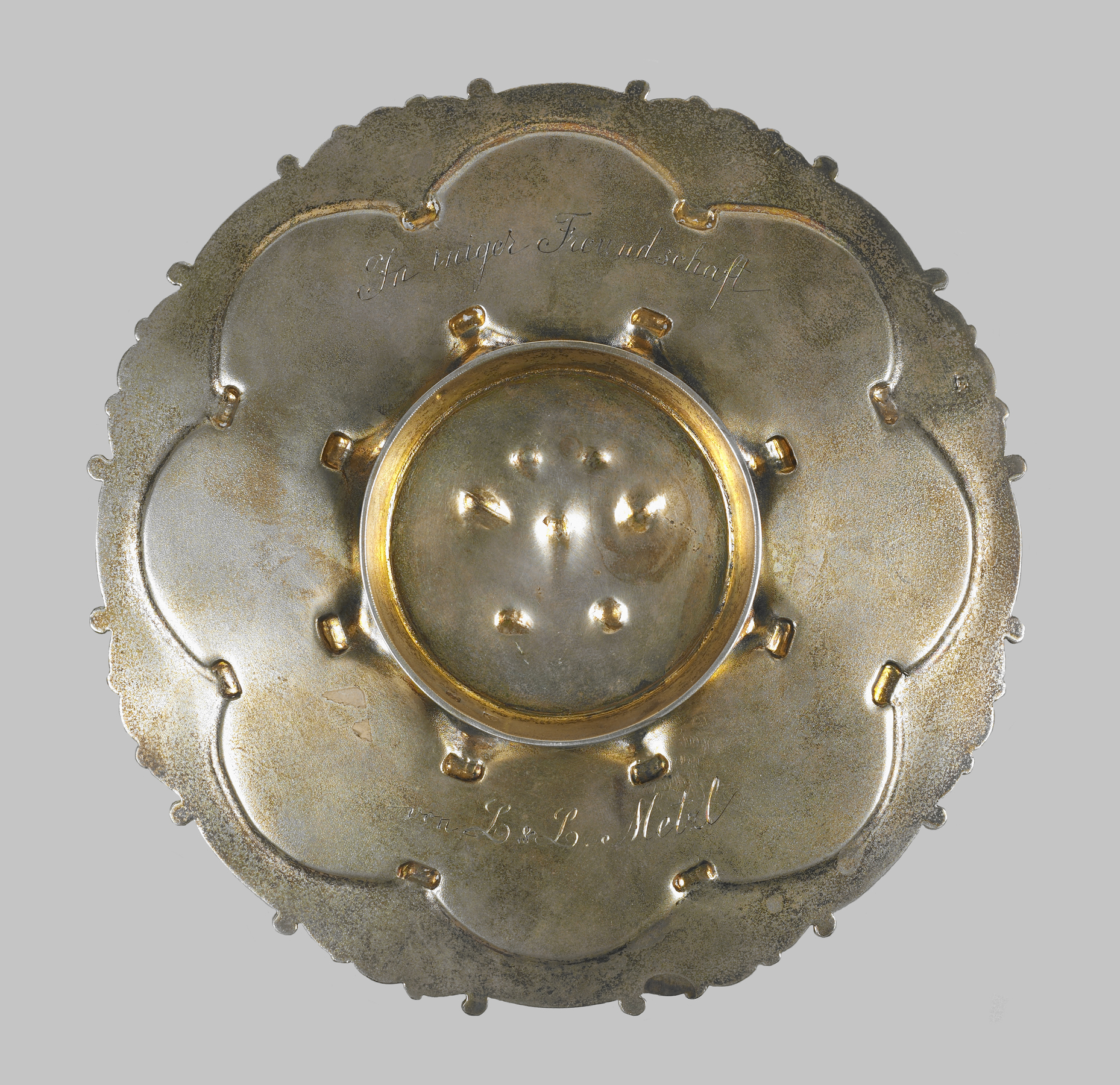Dish with Images of Moscow Landmarks
(18th and 19th Centuries )
In the center of the dish is a crowned, double-headed eagle in olive against a turquoise background enriched with loose filigree scrolls. Arched fields enclose three views of famous Moscow landmarks painted en grisaille alternating with others containing open and closed blossoms on cream-colored grounds. The landmarks include the Tsar Cannon commissioned in 1586 by Tsar Fedor Ivanovich; the 204-ton Tsar Bell founded in 1733-1735; the Victory Arch erected in 1826, and a monument by Viktor Petrovich Martos (1754-1835) to Dmitry Pozharsky and Kizma Minin, the Russian leaders who expelled the Polish-Lithuanian forces from Moscow in 1612. Around the dish's rim, scrolls are set with cabochon amethyst and citrine stones.
Inscription
Provenance
Provenance (from the French provenir, 'to come from/forth') is the chronology of the ownership, custody, or location of a historical object. Learn more about provenance at the Walters.
Jean M. Riddell, Washington, D.C.; by bequest to Walters Art Museum, 2010.
Exhibitions
| 2017-2018 | Fabergé and the Russian Crafts Tradition: An Empire's Legacy . The Walters Art Museum, Baltimore. |
Geographies
Russia, Moscow
(Place of Origin)
Tsar Cannon (Place Depicted)
Victory Arch (Place Depicted)
Measurements
Overall H: 7/8 × Diam: 6 in. (2.2 × 15.2 cm)
Credit Line
Bequest of Mrs. Jean M. Riddell, 2010
Location in Museum
Not on view
Accession Number
In libraries, galleries, museums, and archives, an accession number is a unique identifier assigned to each object in the collection.
In libraries, galleries, museums, and archives, an accession number is a unique identifier assigned to each object in the collection.
44.896





